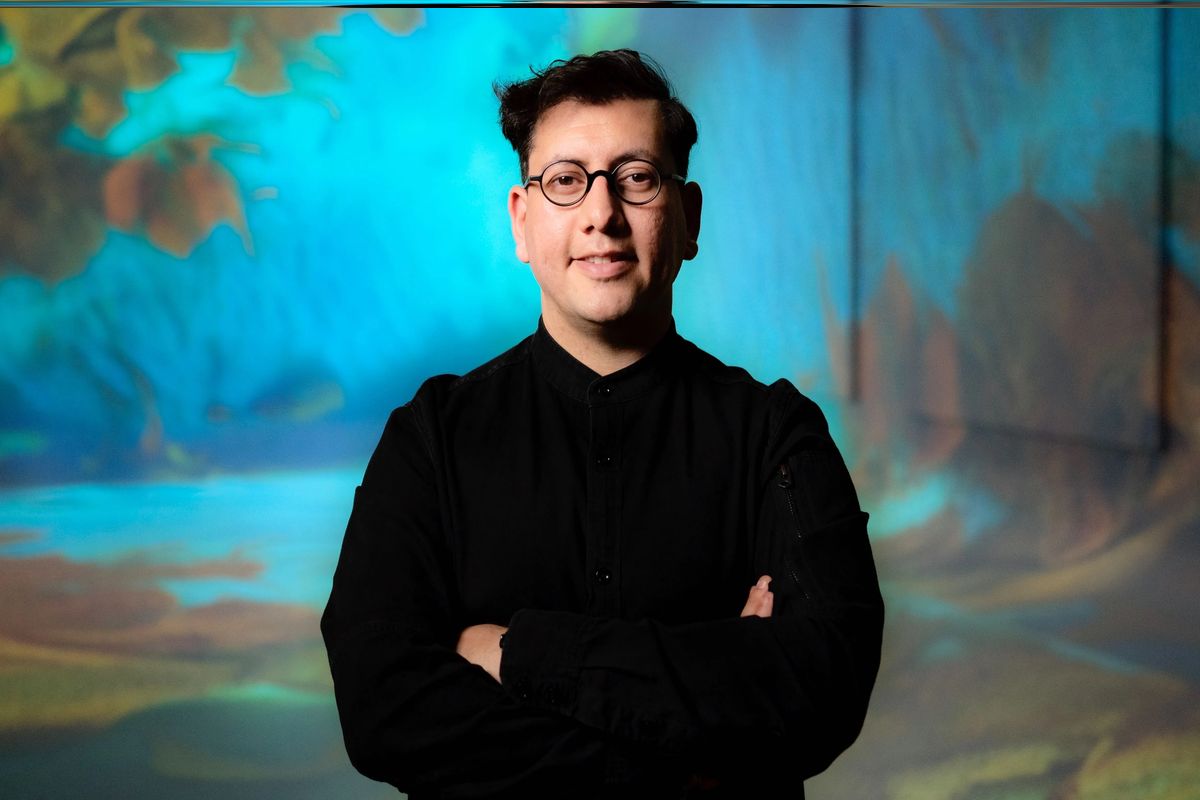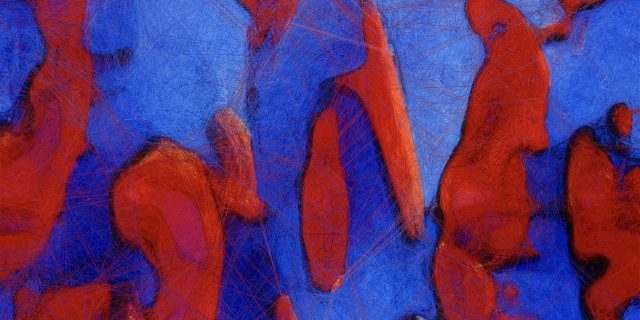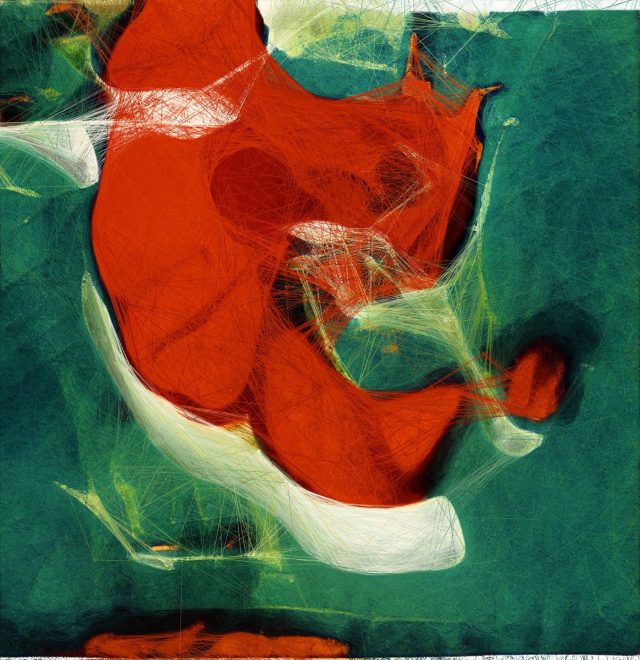What would an advanced machine dream about after viewing the collection of The Museum of Modern Art (MoMA)? For Unsupervised, artist Refik Anadol (b. 1985) utilized artificial intelligence to deduce and transform over 200 years of art at MoMA.
Refik Anadol is a media artist, leader, and director in the aesthetics of data and machine intelligence. His work detects creativity at the intersection of machines and humans. Using the data that surrounds us as the main material, and the neural network of a computerized mind as a partner, Anadol provides us with radical visualizations of our digitized memories and then expands the possibilities of the architecture, arts, narrative, and the body in motion.
Famous for his pioneering media works and public installations, Anadol has developed digital artworks that unfold instantly, in real-time, and constantly generate new and other strange forms that envelop their viewers in a large-scale installation.
Unsupervised is described as a meditation on technology, modern art, and creativity. Anadol carefully trained a refined machine-learning model to help him interpret most of the publicly available data from MoMA’s collection.
As the model ‘walks’ through the conception of its vast range of works from MoMA, it reimagines the history of modern art and dreams about what might have been; and what might be to come. On the other hand, Anadol integrates site-specific input from the environment of the actual Museum’s Gund Lobby. He changes the lights, movement, acoustics, and the outside weather to impact and enhance the constantly shifting sound and imagery.
Related:World-Renowned Artist Gal Yosef Launches Digital Art NFT Collection
Artificial intelligence is mostly used to process, classify, and generate realistic representations of the physical world. On the contrary, Unsupervised is visionary. It explores hallucination, fantasy, and irrationality, developing an alternate understanding of art-making itself.
Unsupervised’s installation is based mainly on works that are embedded in the blockchain, which is a distributed digital ledger that stands as a public record representing Anadol’s art. The artist said:
“I am trying to find ways to connect memories with the future, and to make the invisible visible.”
Unsupervised Is Refik Anadol’s First Solo North American Museum Presentation
The Museum of Modern Art confirmed the special project which went on display in the winter season from November 19, 2022, through March 5, 2023. This major installation featured three new digital artworks by Refik Anadol that used artificial intelligence to transform and interpret over 200 years of art from MoMA’s collection.
Renowned for his advanced digital artworks and public installations, Anadol developed a singular and unique meditation on technology, modern art, and creativity. Interestingly, Unsupervised will constantly generate new art forms on a large-scale media wall that measures around 24 × 24 feet located in the Museum’s ground-floor Gund Lobby.
Refik Anadol’s exhibition, “Unsupervised,” has been meticulously curated by Michelle Kuo, who holds the position of The Marlene Hess Curator of Painting and Sculpture, and Paola Antonelli, esteemed Senior Curator within the Department of Architecture and Design, also serving as Director of Research and Development. Assisting them in this curatorial endeavor is Lydia Mullin, who holds the role of Curatorial Assistant within the Department of Painting and Sculpture.
Michelle Kuo stated:
“This project reshapes the relationship between the physical and the virtual, the real and the unreal. Often, AI is used to classify, process, and generate realistic representations of the world. Anadol’s work, by contrast, is visionary: it explores dreams, hallucination, and irrationality, posing an alternate understanding of modern art—and of artmaking itself.”
Paola Antonelli commented:
“With this commission, MoMA underscores its support of artists experimenting with new technologies as tools to expand their vocabulary, their impact, and their ability to help society understand and manage change.”
Anadol published an online exhibition on the digital art platform Feral File in 2021. He had trained an advanced machine-learning model to interpret the publicly available visual and informational data of MoMA’s collection. The result is a real-time software artwork that constantly generates new and bizarre images as the machine-learning model ‘walks’ through its conception of MoMA’s collection. It reimagines the trajectory of modern art, while simultaneously paying homage to its long history, and dreaming about its future.
In a concerted effort to enhance the accessibility of these artworks, all of which continue to be openly accessible and permanently visible on Feral File, the artist opted to introduce them as NFTs (Non-Fungible Tokens). This transpired through the launch of a live online auction coinciding with the exhibition’s inauguration, featuring both large and small editions.
Related:Practical NFT Use Cases Beyond Digital Artworks
For the site-specific installations at MoMA, Anadol managed to revise the artworks that he made in 2021 to integrate real-time input from the surrounding environment – changes in movement, light, weather, and volume, which impact the constantly changing imagery. The history of modern art will be transformed by the liveness of public spaces in the present.
Anadol’s AI data sculptures crafted for particular locations, dynamic live audiovisual presentations, and immersive environmental installations take many forms. These creations collectively prompt a reconsideration of our interaction with the physical world, the implications of decentralized networks, the essence of communal involvement, and the artistic capacities inherent in machines.
So far Anadol’s work has been exhibited at venues like the Venice Architecture Biennale, Hammer Museum, the Centre Pompidou-Metz, National Gallery of Victoria, Ars Electronica Festival, Istanbul Design Biennial, Dongdaemun Design Plaza, and ZKM | Center for Art and New Media.










